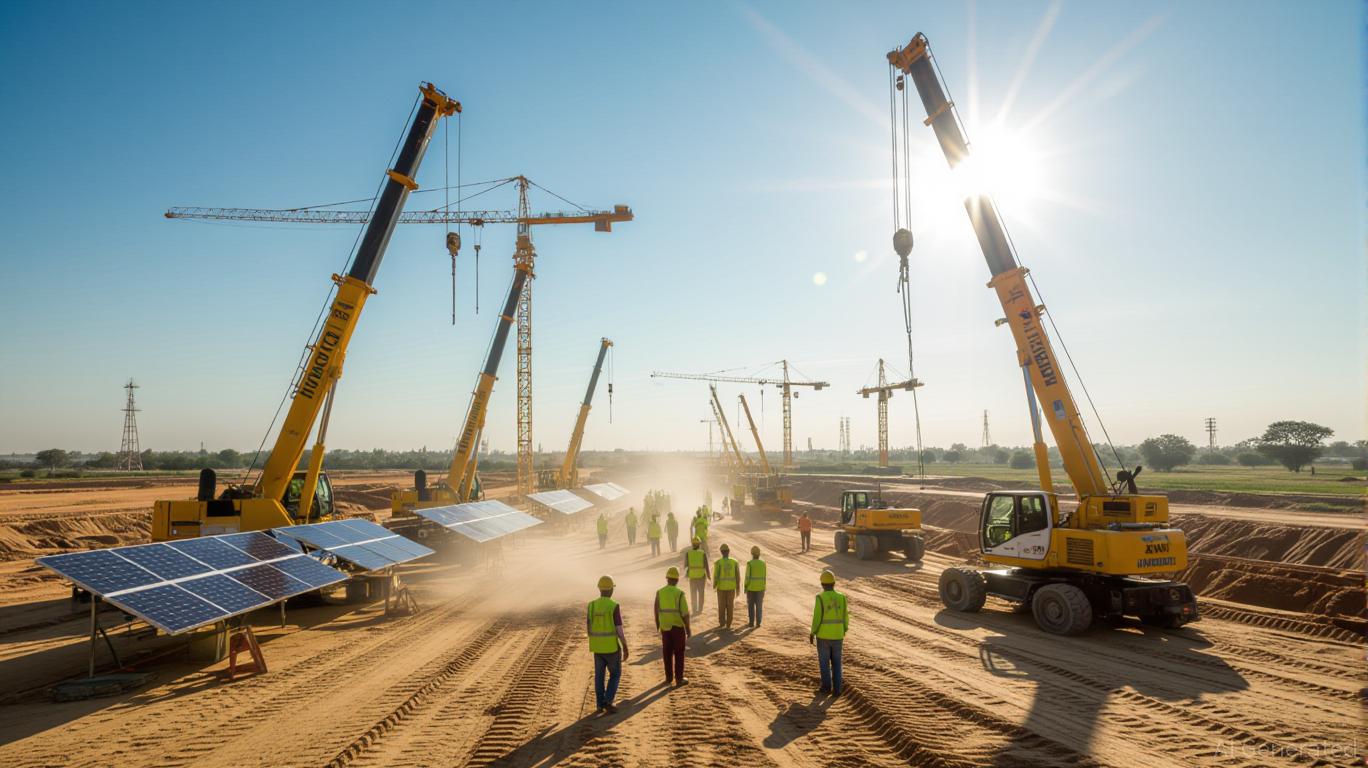In the shadow of escalating U.S. trade tensions, India’s economy is emerging as a compelling case study in resilience and strategic adaptation. As President Donald Trump’s 25% tariffs on Indian exports loom over key sectors like pharmaceuticals, textiles, and electronics, the country’s ability to balance geopolitical pressures with domestic reforms is reshaping investment opportunities. For investors, the challenge lies in identifying undervalued sectors poised to thrive amid global supply chain shifts and India’s own ambitious policy agenda.
The Tariff Test: Resilience in a Fractured Global Trade Landscape
India’s trade surplus with the U.S. hit $41.18 billion in FY2025, a 16.6% increase from the previous year. This surplus, however, has become a double-edged sword. The U.S. tariffs, framed as a response to India’s non-tariff barriers and energy ties with Russia, threaten to erode competitiveness in labor-intensive sectors like textiles ($11 billion in U.S. exports) and gems and jewelry ($8.5 billion). Yet, India’s strategic leverage—its status as a critical node in global supply chains and its refusal to capitulate under pressure—has forced the U.S. into prolonged negotiations.
The Reserve Bank of India (RBI) and the Ministry of Finance remain cautiously optimistic, projecting growth of 6.3–6.8% for FY2026 despite tariff-related headwinds. This confidence is rooted in India’s structural advantages: a young, skilled workforce, a $5 trillion economy, and a growing domestic consumption base. For investors, the key is to look beyond the immediate noise of tariffs and focus on sectors where India’s reforms are creating long-term value.
Undervalued Sectors: The PLI-Driven Transformation
India’s Production Linked Incentive (PLI) schemes are catalyzing a manufacturing renaissance, particularly in semiconductors, renewable energy, and infrastructure. These reforms are not just mitigating the impact of U.S. tariffs but also positioning India as a hub for next-generation industries.
1. Semiconductors: A $100 Billion Bet on the Future
The India Semiconductor Mission (ISM) has attracted $91 billion in investments, with projects like Tata Electronics’ $10.44 billion foundry in Gujarat and Foxconn-HCL’s $433.6 million OSAT facility in Uttar Pradesh. These ventures are not just about manufacturing—they’re about securing India’s place in the global chip supply chain. The government’s 50% fiscal support for eligible costs and its focus on 28–90 nanometre technology (sufficient for power management and IoT applications) are critical differentiators.
Investors should monitor the progress of India’s first domestically produced semiconductor, expected by late 2025. The PLI scheme for semiconductors and electronics manufacturing is projected to grow the sector’s contribution to GDP to 10% by 2030, making it a high-conviction play.
2. Renewable Energy: The Green Gold Rush
India’s renewable energy sector is on a trajectory to surpass $300 billion in cumulative investments by 2030. The PLI for advanced chemistry cell (ACC) batteries and solar PV manufacturing is driving down costs and boosting domestic production. Companies like Adani Green Energy and Tata Power Renewable Energy are scaling up projects at a pace that outstrips global peers.
The government’s push for a $150 billion India-Middle East-Europe Economic Corridor (IMEC) and the National Single Window System for infrastructure projects are further reducing bottlenecks. For investors, renewable energy infrastructure and battery storage firms represent a hedge against volatile fossil fuel markets and geopolitical risks.
3. Infrastructure: The $80 Billion Catalyst
India’s infrastructure sector is attracting $80 billion in FDI, driven by projects like the Delhi-Mumbai Industrial Corridor and Dedicated Freight Corridors. The PLI for construction and engineering services is unlocking efficiency gains, with companies like Welspun Corp and HeidelbergCement India reporting 15–20% EBITDA growth in FY2025.

The sector’s appeal lies in its resilience to trade wars and its role in enabling India’s “China Plus One” strategy. For long-term investors, infrastructure REITs and engineering firms with strong government contracts are undervalued assets.
Strategic Plays: Navigating the Tariff Maze
While U.S. tariffs pose near-term risks, they also create opportunities for diversification. India’s focus on “friend-shoring” with the EU, Middle East, and Southeast Asia is reducing overreliance on any single market. The recent UK-India Free Trade Agreement (FTA) and negotiations with the EU and Australia are examples of this strategy.
Healthcare and Pharmaceuticals: The Global Safety Net
Despite U.S. tariffs, India’s generic drug industry remains indispensable. Companies like Cipla and Sun Pharmaceutical are expanding into domestic markets and acquiring U.S. brownfield sites to insulate against geopolitical shocks. The sector’s defensive nature and 20% CAGR in exports (outside the U.S.) make it a must-own for risk-averse investors.
BFSI and IT Services: The Digital Backbone
India’s IT services sector, trading at a 5% discount to its five-year average, is adapting to macroeconomic headwinds by accelerating AI and automation projects. Firms like TCS and Infosys are securing contracts with U.S. banks for digital transformation, while the BFSI sector contributes 30% of IT revenue.
Conclusion: A Long-Term Play on Resilience
India’s ability to navigate U.S. tariffs while capitalizing on domestic reforms and global supply chain shifts underscores its investment potential. For investors, the path forward lies in sectors where policy tailwinds and structural demand are converging: semiconductors, renewable energy, infrastructure, and healthcare. While short-term volatility is inevitable, the long-term outlook for India’s economy remains robust, supported by its demographic dividend and strategic autonomy.
As the world grapples with fragmented trade dynamics, India’s playbook offers a blueprint for resilience—a reminder that geopolitical risks, when managed with foresight, can yield extraordinary returns for those who dare to look beyond the headlines.
